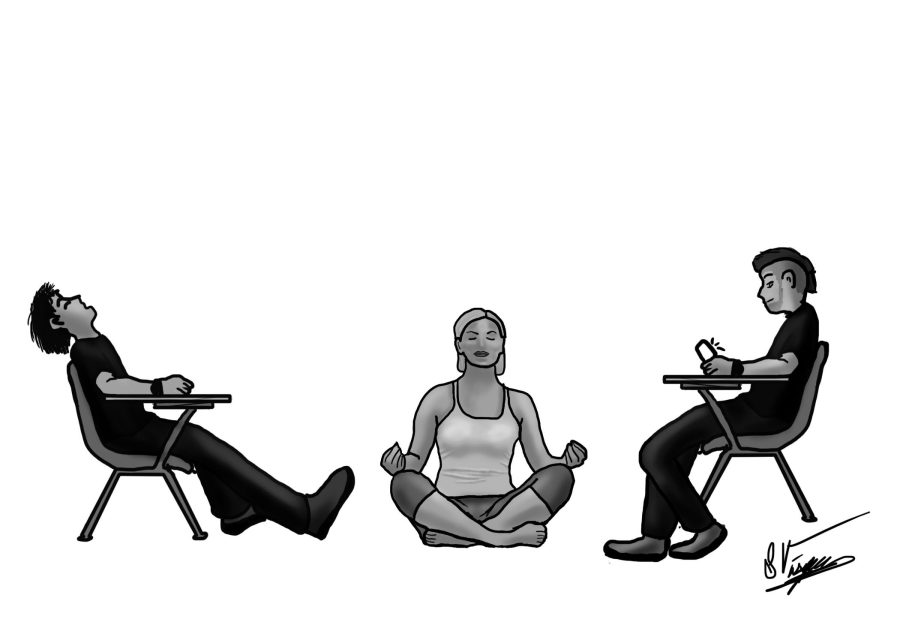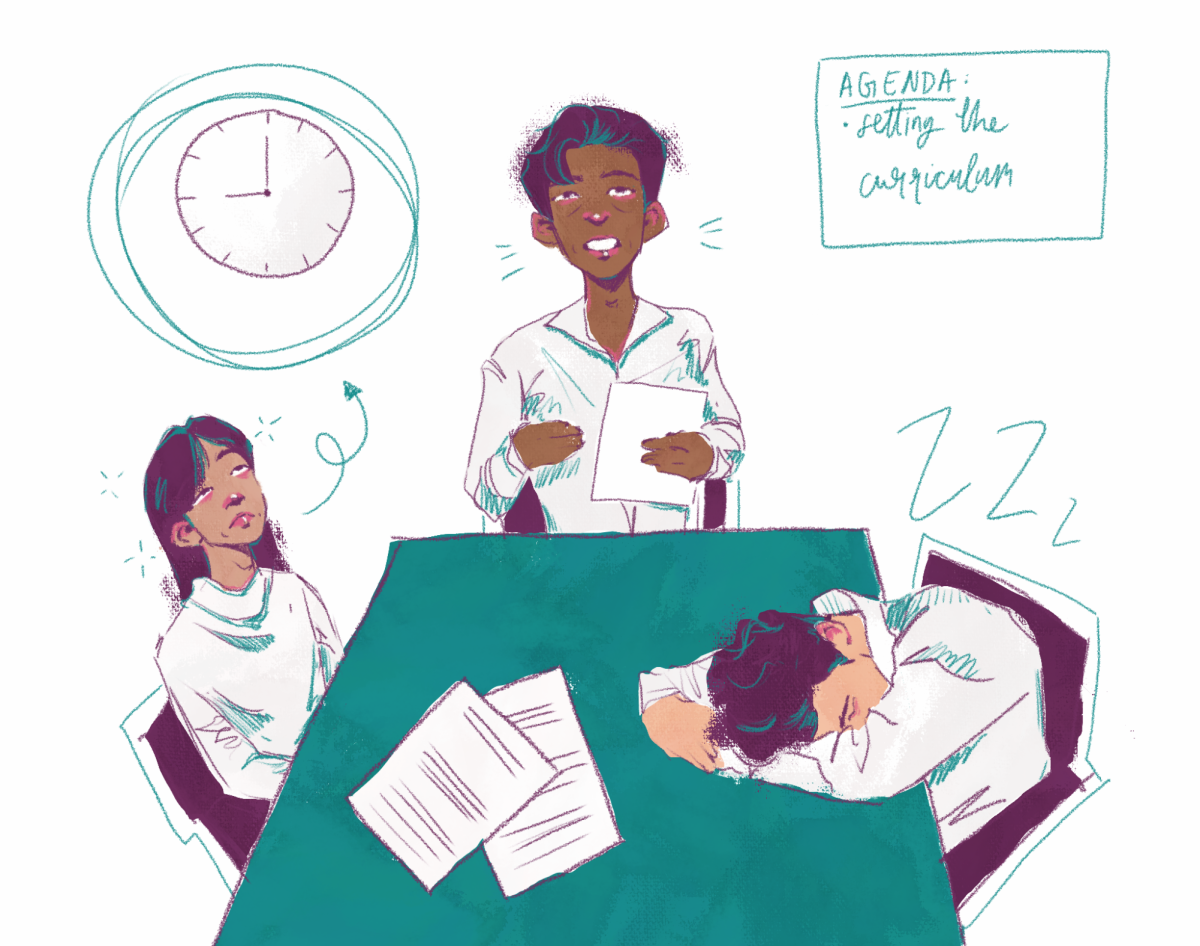At the beginning of each period, certain Palo Alto High School teachers encourage their students to dedicate five to 10 minutes of class time to “mindfulness,” which involves letting the mind wander with the purpose of refocusing student attention before starting class. Mindfulness, or the act of being aware of one’s surroundings, is often achieved through meditation and deep breathing and has recently been introduced into several classes including Living Skills, Dance Physical Education (PE) and Comedy Literatue at Paly. Though this practice is a logical idea in theory, realistically, mindfulness is not used effectively in the classroom and therefore does not benefit students.
By turning mindfulness from a voluntary action into a mandatory ritual, the very idea of “being present” and relaxed is lost. Additionally, this form of mindfulness may actually contribute to stress by making mindfulness something that students feel they must work for, rather than an available opportunity that students can pursue to use as a destresser.
During the time in which students should be focusing on their breathing and mindfulness, many take advantage of the respite, using it to look at their phones or fall asleep.
As a result, students lose valuable in class work time, to the “mindfulness” period. In addition to losing time, students become distracted after the routine, which is detrimental to what could potentially be an effective learning environment.
“People like [mindfulness] because they don’t have to learn things [in that time],” sophomore Naomi Moresi said. “But that just means that it’s not helpful.”
However well-intentioned the practice of mindfulness is, forcing students to sit in the dark for up to ten minutes does not improve the mental state of the student if the student chooses not to participate.
According to The Mindful Child, a book that details children practicing mindfulness, author Susan Kaiser Greenland explains that making meditation mandatory defeats the purpose of the practice altogether.
“You can insist kids sit still, be quiet, and exert boundaries and control in connection with their bodies, but it is impossible to exert boundaries and control over what is going on in their minds,” Kaiser said. “If kids are not interested, they may sit quietly, but the likelihood that they are meditating is slim.”
In Dance PE, students practice mindfulness at the end of class, laying down without access to any form of technology. This practice eliminates the possibility of students hunching over a desk, trying to access their cell phones.
“I think mindfulness is effective if you are actually trying to do it because it allows you to clear your mind and not focus on anything that is worrying you or stressing you out at the moment,” sophomore, Dance PE student Cecilia Ward said. “Mainly you sit and try to focus on your breathing and clear your mind from everything.”
Mindfulness is a strategy that has been proven to help students when it is correctly implemented in the classroom; however, it is unrealistic to expect students to clear their mind on command, as it defeats the purpose of the entire practice. Rather than benefiting students, improper meditation inadvertently leaves them more distracted than focused.









